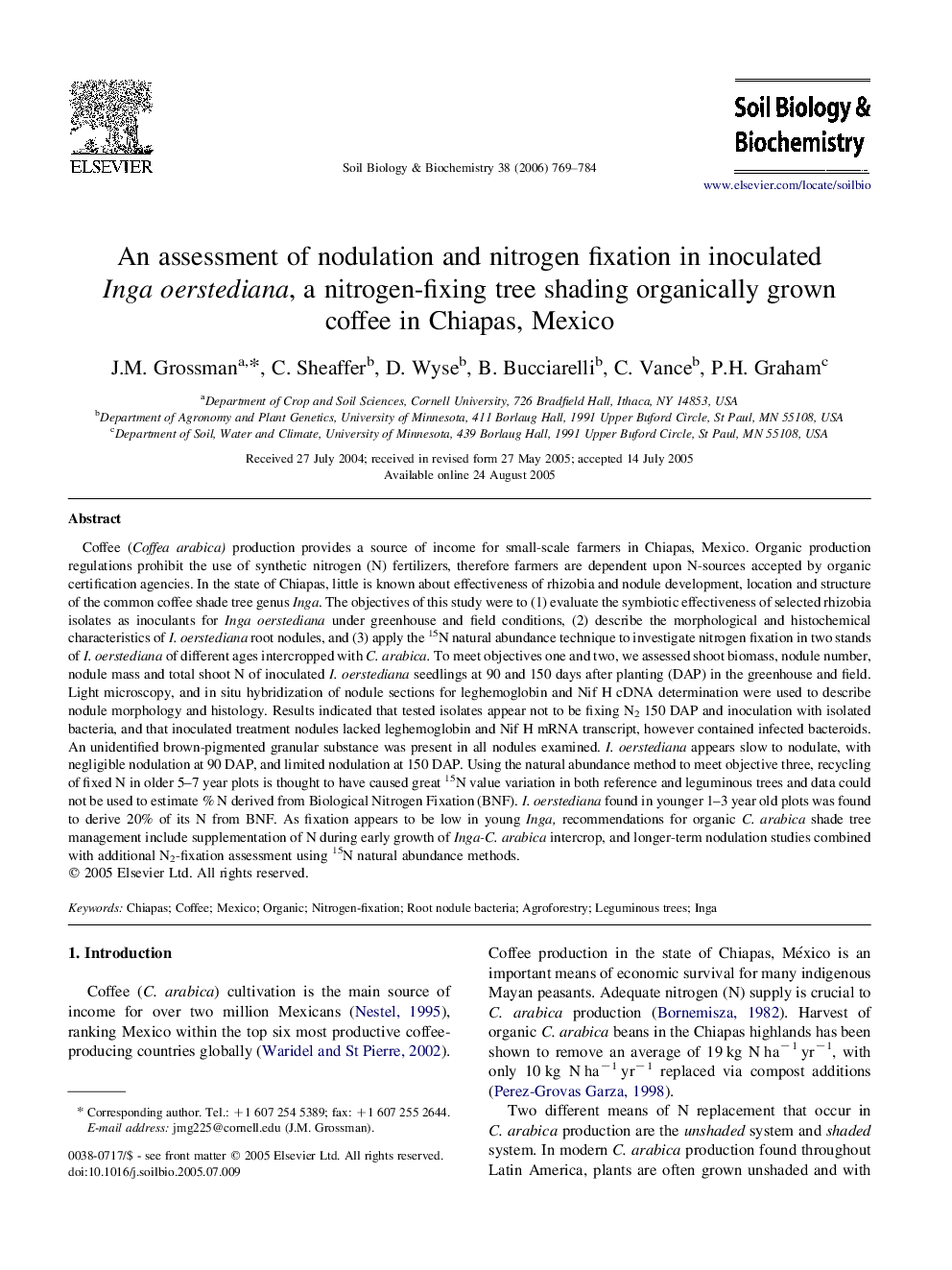| Article ID | Journal | Published Year | Pages | File Type |
|---|---|---|---|---|
| 2026624 | Soil Biology and Biochemistry | 2006 | 16 Pages |
Coffee (Coffea arabica) production provides a source of income for small-scale farmers in Chiapas, Mexico. Organic production regulations prohibit the use of synthetic nitrogen (N) fertilizers, therefore farmers are dependent upon N-sources accepted by organic certification agencies. In the state of Chiapas, little is known about effectiveness of rhizobia and nodule development, location and structure of the common coffee shade tree genus Inga. The objectives of this study were to (1) evaluate the symbiotic effectiveness of selected rhizobia isolates as inoculants for Inga oerstediana under greenhouse and field conditions, (2) describe the morphological and histochemical characteristics of I. oerstediana root nodules, and (3) apply the 15N natural abundance technique to investigate nitrogen fixation in two stands of I. oerstediana of different ages intercropped with C. arabica. To meet objectives one and two, we assessed shoot biomass, nodule number, nodule mass and total shoot N of inoculated I. oerstediana seedlings at 90 and 150 days after planting (DAP) in the greenhouse and field. Light microscopy, and in situ hybridization of nodule sections for leghemoglobin and Nif H cDNA determination were used to describe nodule morphology and histology. Results indicated that tested isolates appear not to be fixing N2 150 DAP and inoculation with isolated bacteria, and that inoculated treatment nodules lacked leghemoglobin and Nif H mRNA transcript, however contained infected bacteroids. An unidentified brown-pigmented granular substance was present in all nodules examined. I. oerstediana appears slow to nodulate, with negligible nodulation at 90 DAP, and limited nodulation at 150 DAP. Using the natural abundance method to meet objective three, recycling of fixed N in older 5–7 year plots is thought to have caused great 15N value variation in both reference and leguminous trees and data could not be used to estimate % N derived from Biological Nitrogen Fixation (BNF). I. oerstediana found in younger 1–3 year old plots was found to derive 20% of its N from BNF. As fixation appears to be low in young Inga, recommendations for organic C. arabica shade tree management include supplementation of N during early growth of Inga-C. arabica intercrop, and longer-term nodulation studies combined with additional N2-fixation assessment using 15N natural abundance methods.
